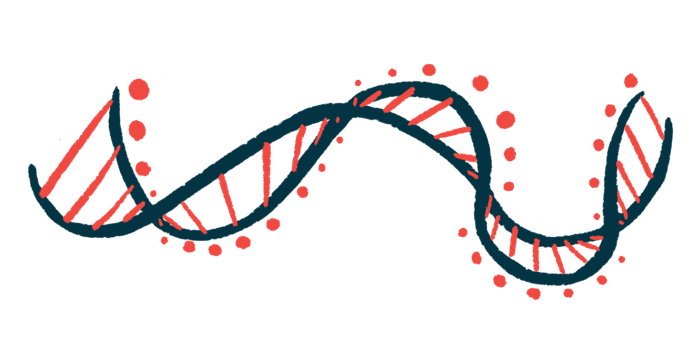2 Late Infantile Batten Disease Gene Therapies Move to Human Trials
Regenxbio's RGX-181, RGX-381 both aim to treat CLN2 symptoms
Written by |

Both of Regenxbio‘s gene therapy candidates for neuronal ceroid lipofuscinosis type 2 (CLN2) disease, also known as late infantile Batten disease, have advanced to in-human testing, the company reported.
These clinical trials will evaluate the one-time experimental gene therapies in patients with the inherited disease, which typically occurs in children ages 2 to 4.
A first patient has now been dosed with RGX-181, which aims to treat the neurological symptoms of CLN2 disease, as part of a single-patient study in Brazil.
RGX-381, designed to treat disease-associated vision problems, has been cleared for testing in a Phase 1/2 clinical trial in the U.K. That trial is expected to start in the first half of 2023.
“With strong preclinical data highlighting the ability of both RGX-181 and RGX-381 to support widespread distribution and [production] of the TPP1 enzyme that is lacking in patients with CLN2 disease, we believe that these programs have the potential to provide much-needed new treatment options for children with this devastating disease,” Steve Pakola, MD, chief medical officer of Regenxbio, said in a company press release.
Testing Regenxbio’s therapies in clinical trials
Regenxbio reported last year that clinical development of RGX-181 had been delayed in the U.S., with regulators placing a proposed in-human trial on hold. The U.S. Food and Drug Administration said it was waiting for more information about dose selection and other study procedures.
That delay also had stopped up the RGX-381 program, for which the company had not yet applied for clinical testing in the U.S. No additional updates about potential trials in the U.S. have been provided. Meantime, development is advancing in other nations.
Both gene therapy candidates were designed with the company’s NAV Technology Platform, which uses proprietary versions of adeno-associated viruses (AAVs). AAVs are a type of modified viruses commonly used in gene therapy to deliver genes to the body’s cells.
“Regenxbio continues to make excellent progress advancing our AAV therapeutics pipeline, and we are pleased to share the advancement of two more programs that may support our ‘5x’25’ strategy to have five AAV therapeutics either on the market or in late-stage development by 2025,” Pakola said.
All types of Batten disease are caused by mutations in genes that code for enzymes involved in breaking down cellular waste in lysosomes, cells’ recycling centers. This results in the toxic buildup of waste products called lipofuscins inside lysosomes, ultimately causing cellular damage and death.
In late-infantile Batten disease, the buildup is caused by mutations in the CLN2 (TPP1) gene that’s responsible for producing a lysosomal enzyme called tripeptidyl peptidase 1, or TPP1.
The central nervous system (CNS) — the brain and spinal cord — is one part of the body particularly susceptible to lipofuscin accumulation. Such buildup leads to neurological symptoms such as intellectual disability, language loss, and motor impairments.
RGX-181 uses a modified and harmless AAV serotype 9 (AAV9) to deliver a healthy copy of the CLN2 gene directly to the CNS. Given as a single injection into the cisterna magna, a fluid-filled space at the base of the skull with CNS access, the therapy is expected to restore the production of a working TPP1 enzyme.
In animal models of the disease, the therapy was shown to restore normal TPP1 activity, leading to neurobehavioral improvements and prolonged survival.
As such, Regenxbio believes RGX-181 will be able to ease the neurological symptoms of CLN2 disease.
The first patient was dosed under a single-patient, investigator-initiated study at the Hospital de Clínicas de Porto Alegre, in Brazil. As of December 20, RGX-181had been well-tolerated, with no reports of treatment-related serious adverse events.
“Patients with this devastating disease need new treatment options with the potential for longer lasting effects on the CNS, and we hope that this gene therapy benefits this patient community,” said Carolina Fischinger, MD, PhD, the principal investigator of the single-patient study.
Treating eye problems in late infantile Batten disease
Eye problems that can progress to vision loss also are common among CLN2 disease patients. According to Regenxbio, there is no available treatment for these symptoms.
Brineura (cerliponase alfa), an enzyme replacement therapy approved for the disease, is not effective at preventing blindness, the company noted.
Designed similarly to RGX-181, RGX-381 is an AAV9-based CLN2 gene therapy. It’s delivered directly into the space behind the eye’s retina, the back part of the eyeball that contains light-sensitive cells.
“We believe that one-time subretinal administration of RGX-381 could provide a durable source of TPP1 activity in the retina, thereby potentially preventing visual decline,” Regenxbio stated in the release.
The U.K. Health Authority accepted a clinical trial application from the company seeking to test RGX-381 in a first-in-human trial.
The upcoming Phase 1/2 study will evaluate the treatment’s safety and tolerability, as well as its effects on the retina’s anatomy and function, among people with CLN2 disease. It will take place at Great Ormond Street Hospital, in London.
Both RGX-181 and RGX-381 have been granted orphan drug and rare pediatric disease designations in the U.S. for the treatment of late-infantile Batten disease. These are intended to accelerate the clinical development and regulatory review of treatments for rare, life-threatening diseases.
The gene therapies also have received an advanced therapy medicinal product classification in Europe, granted to innovate therapies expected to help patients with rare, previously untreatable diseases.







